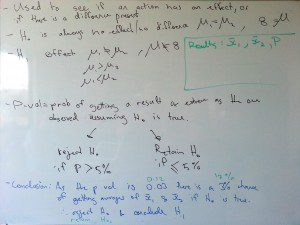What’s the best way to prepare for the Mathematics Applied Exam?

The Mathematics Applied Preparation (MAP) Program is an opportunity to fast track your Maths Applied skills in preparation for TQA exams. Run over 7 sessions, this program is a review and consolidation of all of the key Maths Applied concepts as well as a targeted look at study and exam techniques. The MAP program aims to prepare participants as best as possible for the end of year exams and to give them learning skills that are applicable to all other areas of study that could be encountered in future.
MAP Program Timeline: Click on the topics to go to the content for that week. (note: the final 4 sessions are in semester break)
| Saturday | 13rd | September | 12:30-3pm | Introduction and Study Skills (find out more) |
| Saturday | 20th | September | 12:30-3pm | Calculus |
| Saturday | 27th | September | 12:30-3pm | Algebraic Modelling |
| Tuesday | 30th | September | 12:30-3pm | Finance |
| Thursday | 2nd | October | 12:30-3pm | Data Analysis |
| Tuesday | 7th | October | 12:30-3pm | Applied Geometry |
| Thursday | 9th | October | 12:30-3pm | Course review and Exam Technique (find out more) |

If you are interested but the above times do not suit, please be in contact. If there is sufficient interest additional sessions will be run at alternate times.
What will make the MAP Program a success?
- Short and Targeted Direct Instruction: ie: lessons limited to 12 minute blocks1
- Frequent Feedback: To identify key areas for improvement and facilitate targeted learning2
- Memory Software: Spaced Repetition Software utilised to promote information retention3
- Concept Maps: Students will see where the lesson is up to and how maths ideas are related4
- Dynamic sessions: Sessions will incorporate many varied activities and appropriate breaks5
- Video Record of Direct Instruction: All lessons recorded and freely available for student review6
- Equal Access: Course fees are on a donation basis to facilitate learning for all
The course draws heavily on Learn More, Study Less by Scott Young, Learning in the Fast Lane by Suzy Pepper Rollin, Five Big Ideas for Effective Teaching by Donna Wilson and Marcus Conyers and Why Students Don't Like School by Daniel Willingham.
Who’s running it?
Ollie is a UTas graduate with majors in Physics and Economic Analysis. He has extensive tutoring and education facilitation experience and has tutored Maths Applied students for over 5 years. He was employed by UTas to run study sessions for Physics students in 2011 and 2012 and is currently tutoring maths in UTas’ Pre-degree preparation program. He has a passion for education and his blog posts on all things learning and education can be found on this site.
Where? 1A Russell Crescent, Sandy Bay. ie: The top level of the big yellow building next to the Sandy Bay Coles car park.
Cost: As mentioned, this course is by donation to facilitate equal access. Suggested donation per session is $40 per student. Invoices will be generated upon request.
Register Your Interest: By emailing oliverlovelltas@gmail.com.
“(Ollie) helped me overcome my main obstacle of grasping mathematical concepts and ideas. He is a fun and enthusiastic teacher, and is great to work with.”-Tom, Mathematics Applied, 2013
“Ollie’s tutoring was engaging, productive, and friendly, helping to improve my grades enormously. Ollie helped reveal my passion and enthusiasm for mathematics, greatly influencing me to study an engineering degree at university”-Dylan, Mathematics Methods, 2012.
“I found Ollie’s enthusiasm is what really made my experience in peer assisted study sessions great. He made studying a really enjoyable experience.”-Alec, 1st year Physics student, 2011
- Jensen, E. 2005. Teaching with the Brain in Mind (p. 37)
- Stiggins, R. 2004. New assessment beliefs for a new school mission and Black, P., & William, D. 1998. Inside the black box: Raising standards through classroom assessment
- See http://tiny.cc/srsresearch and http://www.ollielovell.com/?p=160 for information on SRS effectiveness
- Novak, J. D. 2003, The Promise of New Ideas and New Technology for Improving Teaching and Learning. Paper summariesed at http://www.ollielovell.com/?p=142
- Sousa, D. A., & Tomlinson, C. A. 2011. Differentiation and the brain: how neuroscience supports the learner-friendly classroom
- See http://www.ollielovell.com/?p=116
Week 2: Calculus-What's a Space Ship got to do with it?
Today will begin with developing some derivative intuition via an analogy. We're going to use a space ship to get a bit of a better feel for what the derivative is all about.
Following that: Based on our subject survey in week 1 we determined that it is important to look at the derivative, and maximums and minimums in preparation for the end of year exam. So that's what we're going to focus on in this session. One question that's often seen in the exam is on finding the equation for the volume or area of some shape or container, then using calculus to find the maximum volume or area of that object. This process involves 6 steps.
- Alphabet equation: ie: find the general area or volume (or area) equation for the shape with lot's of letters in it (that's why it's called the alphabet equation)
- Material equation: Find the equation based on the materials that are available to build the shape
- Materials in terms of x: Take the material equation and manipulate it so that it is in terms of x (ie: get the letter that isn't x by itself on one side of the equals sign)-practice the algebra skills for this step here
- Substitute: your result from step 3 back into the alphabet equation. At this point you should have what we'll call the volume equation (or the area equation) with only an x in it.
- Find the derivative of the volume equation: We do this using the power rule.
- Set the derivative equal to 0: When the derivative=0, this is the maximum. To find the x value for which there is a maximum. (For a better understanding of this, and to find out what a Space Ship has got to do with it, check out this article on the derivative)
This is a 6 step process, and each of the steps has multiple things that we need to remember in order to complete it. So that's way more that our 7 slot brain budget! To cope with this we need to use one of the training techniques which is ‘batching', ie: doing lots of the same type of questions till we've really got the hang of it before moving on. The way that today is going to work is we're going to have about 15 minutes practice on each of these steps, then at the end we'll bring it all together and will create a mnemonic to remember the steps by. Hopefully through enough drilling this process will become automatic to the point where we're able to do these questions no-sweat.
Here's a document of all of these kind of questions, right back to 2007 (The survey step)
Week 3: Algebraic Modelling
This week is all about Algebraic Modelling. A survey of past exams tells us that there are a few concepts for us to get our head around this week:
- Interpolation and Extrapolation
- Correlation Co-efficient (r) and Coefficient of Determination (r2)
- Linear Equations-Determining Equations and Graphing Lines, Applied to revenue/cost/profit
- Residuals
Point 1 and 2 are super easy, and they're just a matter of drilling the questions. Point 3 will take a little more time, and point 4 again will take a bit of thinking. Here's an outline of this weeks session…
- Interpolation and Extrapolation
- Correlation Co-efficient (r) and Coefficient of Determination (r2)
Good news, these two points are super easy. Why? Because the answers are on your cheat sheet!
For this section of today's session we're going to think of functions as
Here's an image of different correlation coefficients (source)

3. Linear Equations-Determining Equations and Graphing Lines, Applied to revenue/cost/profit
We're going to approach these questions in a similar way to how we approached the volume and area equations last week. By chunking. Steps to finding the equation of a straight line go roughly like this…
- What's the gradient (use the gradient equation at the start of the cheat sheet or the question will GIVE it to you)
- What's the y intercept?
And that's pretty much it! There may be an additional question such as… what's the break even point? In which case you just
- Set the revenue equation equal to the cost equation.
And Voila, you're done! Here are the questions we'll be working on.
4. Residuals
Now, residuals! This is a bit more of a complicated topic, and we'll make sure we've really nailed the other points before (and if) we move on to this one. But here's the rub
‘A residual is just the difference between an actual data point, and the trend line'.
Below is a question where we can see residuals in action, we'll discuss this more in session.
Week 4, Session 1: Finance
Finance is an area that many students find easier than the others topics in Maths Applied. This week the focus will be on the four main topics of finance: Interest/Inflation, Depreciation, Annuities, (and a very small amount on) effective interest rates.
I anticipate that we can get on top of this topic in a short amount of time, thus, extra time will be spent reviewing content from previous sessions
Week 4, Session 2: Data Analysis
 Four main topics to get our heads around this week. Box and Whisker plots, the Normal Distribution, Ogives, and t-tests. I've grouped together questions as we're going to be using them and they can all be found here. We'll start of with Box and Whiskers, move on to Ogives, then the Normal Distribution, then t-tests.
Four main topics to get our heads around this week. Box and Whisker plots, the Normal Distribution, Ogives, and t-tests. I've grouped together questions as we're going to be using them and they can all be found here. We'll start of with Box and Whiskers, move on to Ogives, then the Normal Distribution, then t-tests.
Week 5, Session 1: Applied Geometry
Applied Geometry. Applied Geometry Grouped questions are available here: Here's the summary video of a few points that tripped us up whilst working on Applied Geometry.
Before the final session, here's the study plan:
- Wednesday: Do 2010 Question 10 (Applied Geometry), and 2012 Q 6 (Data Analysis)
- Thursday: Do 2011 Question 19 (Finance), and 2013 Question 1 (Algebraic Modelling)
- Friday: Do 2012 Question 5 (Calculus)
- Find all you need here: http://www.tqa.tas.gov.au/1089 Exams are called “Exams” solutions are at the bottom of the Examination reports.
Week 5: Session 2
The final session will cover 2 main points. Exam technique and further effective approaches to study.
Exam Technique:
This week we will do a practice test. We will discuss how to effectively approach a test situation, and we will practice these techniques under pressure. Here are some things to make sure you do when you're in an exam situation. Keeping with the food acronyms, these 4 steps can be remembered with the acronym S.P.A.M
 Survey: the whole paper before getting started. Your brain will subconsciously start working on the problems. By this we mean browsing through and trying to categorise each of the questions and possibly even selecting which ones to do first or which to leave out (if there's
Survey: the whole paper before getting started. Your brain will subconsciously start working on the problems. By this we mean browsing through and trying to categorise each of the questions and possibly even selecting which ones to do first or which to leave out (if there's- Positive Self Talk: As you're browsing, tell yourself that you can do the questions. After browsing each question say to yourself ‘oh yeah, I can do that' or ‘oh yeah, I can figure that out'. After you've finished browsing the whole paper. Sit back, close your eyes and take a few deep breaths. Try to allow your mind to clear and think to yourself “I'm looking forward to demonstrating what I know”.
- Allocate: your time, and schedule for some review time. If it's a 1 hour test and you have 5 questions, allocate 10 minutes to each question and move on as soon as you hit that 10 minute mark. What this does is takes advantage of Parkinson's law and forces you to work quickly. Without self-imposing this deadline you could spend way too much time on one question and miss out easy marks from another. You'll notice that this leaves 10 free minutes at the end of the exam to come back and address any points that you've missed.
- Mark and Move on: If you find yourself stuck on a question, or you hit the 10 minute mark on it, mark it and move to the next on. By mark it I mean, take a separate piece of paper and write which question number you need to address, eg: Q8, a). then when you address it later on you can put a strike through it and move on to the next one. This is much more effective than circling questions you need to come back to, especially if you're in a long (eg: 3 hour) exam. If you're in a long exam and you just circle the questions, you'll waste a lot of time flicking through all the pages of the question sheet to find the ones that you need to come back to.
Further Study Approaches:
A recent article in Scientific American Mind's September 2013 issue brought together the findings from over 700 scientific articles that reviewed a number of common study techniques. Some of these techniques were as follows:
- Self Testing: Quizzing Yourself
- Distributed Practice: Spacing revision out over time
- Elaborative Interrogation: Posing “why is it so?” questions and explaining/exploring why
- Self Explanation: aka: summarising and linking. Outlining what you've learnt and how it's related to what you already knew
- Interleaved Practice: Mixing different question types in a single practice session. The key here is forcing yourself to learn to quickly identify which type/style of question you are facing and how to approach them
- Highlighting: Underlining important points
- Re-reading: Going over material again by re-reading it again.
Which ones do you think would have come out as most effective*?
The truth is, the techniques above are listed in order of effectiveness, from most to least. Self Testing and Distributed Practicecame out on top, Elaborative Interrogation, Self Explanation and Interleaved Practice were runners up, and Highlighting and Re-reading were some of the least effective study techniques. So if we should be focusing on self testing and distributed practice how can we do it?
Luckily there's one piece of software that helps you to do both of these things with optimum efficiency. It's called Anki. Anki is a spaced-repetition software program that allows you to study as efficiently as possible and only review when you absolutely need to. I have written about Anki previously here.
Elaborative Interrogation, Self Explanation and Interleaved Practice, I highly recommend using concept mapping software. I explain mind mapping software more in this article, the software that I use at present is mindmeister.
Finally, we'll wrap up today's session by completing this survey.
Here's an example of what a mindmap can look like. I used this mindmap as the basis for a recent lecture on Data. It's interactive, so feel free to click through and explore.
*Here's SA Mind's criterion for selection of which were most effective: ‘To receive our recommendation, a technique must be useful in a range of learning conditions, such as whether a stu- dent works alone or in a group. It must assist learners of vari- ous ages, abilities and levels of prior knowledge—and it must have been tested in a classroom or other real-world situation. Learners should be able to use the method to master a variety of subjects, and their performance should benefit no matter what kind of test is used to measure it. The best approaches also result in long-lasting improvements in knowledge and comprehension.'


